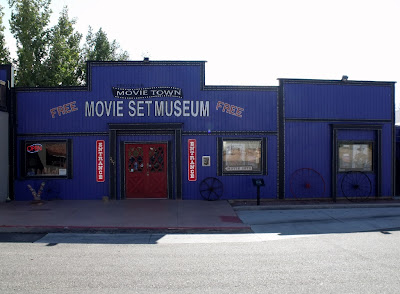Stories in stone have been left by nature and what humans call “rock art” for many thousands of years. Is it communication, graffiti, art or vandalism?
 Twice in the last two months I’ve come across the idea of what is commonly known as “rock art” not being art at all, but stories. Charley, from the Pauite tribe, said his people have art but the work on the rock is story. Archaeologist Doug McFadden agrees. I love stories, to read, share, interpret and learn from. Long before European Americans settled in Kanab, Utah indigenous people lived along Kanab Creek. Yet even before that, millions of years ago nature created rock art of her own.
Twice in the last two months I’ve come across the idea of what is commonly known as “rock art” not being art at all, but stories. Charley, from the Pauite tribe, said his people have art but the work on the rock is story. Archaeologist Doug McFadden agrees. I love stories, to read, share, interpret and learn from. Long before European Americans settled in Kanab, Utah indigenous people lived along Kanab Creek. Yet even before that, millions of years ago nature created rock art of her own.
Last week, Bill showed me some local rock art that included geologic, indigenous, historic (older than 50 years) and contemporary stories in stone.
 I have long admired the colorful cliffs of Navajo sandstone spread around southern Nevada, northern Arizona, northwest Colorado and Utah. Several national parks and monuments like Zion, Capital Reef, Glen Canyon, Vermilion Cliffs, and Canyonlands include erosional features of Navajo sandstone.
I have long admired the colorful cliffs of Navajo sandstone spread around southern Nevada, northern Arizona, northwest Colorado and Utah. Several national parks and monuments like Zion, Capital Reef, Glen Canyon, Vermilion Cliffs, and Canyonlands include erosional features of Navajo sandstone.


Beginning as sand dunes about 190 million years ago in an arid sand sea or erg, the Arabic word meaning dune field, on the Western portion of the Supercontinent Pangaea. In its current state, it covers 102,300 square miles. During the Jurassic, it might have been two and a half times larger. The story of ancient life has been left behind in the form of dinosaur tracks and stromatolite fossils.  Changing directions of ancient winds can be read in the layered bedding planes once erosion reveals the story of a different climate and landscape than seen today.
Changing directions of ancient winds can be read in the layered bedding planes once erosion reveals the story of a different climate and landscape than seen today.
 Vertical cliffs of up to 2,200 feet (670 m) often topped by massive domes of white are capped by the 160 million year old Carmel Formation made up of alternate layers of reddish-brown siltstone, whitish-gray gypsum and limestone that continue the geologic story.
Vertical cliffs of up to 2,200 feet (670 m) often topped by massive domes of white are capped by the 160 million year old Carmel Formation made up of alternate layers of reddish-brown siltstone, whitish-gray gypsum and limestone that continue the geologic story.
 Then add black, brown, crimson, vermillion, orange, salmon, peach, pink, gold, and yellow colors. Depending on the properties of the sandstone, iron oxides like hematite, goethite and limonite precipitate within spaces between quartz grains leaving colorful bands and painted patinas.
Then add black, brown, crimson, vermillion, orange, salmon, peach, pink, gold, and yellow colors. Depending on the properties of the sandstone, iron oxides like hematite, goethite and limonite precipitate within spaces between quartz grains leaving colorful bands and painted patinas.
Sometimes the patina also makes a nice palette for petroglyphs created by chipping away the outer dark later to reveal the light colored rock beneath. The amount of patina staining an existing petroglyph and the style can help establish how long ago the story was told. The Kaibab Paiute established themselves in the area for the last 1000 years. Prior to that the landscape was occupied by Ancient Puebloan, or Anasazi people.
 I am fascinated by the First People’s stories in stone even if my interpretation is different than the authors. Sometimes figures seem obvious and other markings are difficult to read or impossible to tell if they are truly very old.
I am fascinated by the First People’s stories in stone even if my interpretation is different than the authors. Sometimes figures seem obvious and other markings are difficult to read or impossible to tell if they are truly very old.
 And sometimes the patina has covered the ancient petroglyphs making them barely discernible.
And sometimes the patina has covered the ancient petroglyphs making them barely discernible.
 We saw what might be a Native ruin, if it’s very old probably the remains of a granary or food storage area.
We saw what might be a Native ruin, if it’s very old probably the remains of a granary or food storage area.
Historic Story
A little more modern markings on rock are still considered historic if over 50 years old from present. These tend to be names and dates in proclamation of “Kilroy was here.”
 Early pioneers passed by this area in the 1850s and eventually 10 Mormon families founded the town of Kanab, Utah in 1870. They too left a story on the sandstone pallet which requires more research than I chose to delve into.
Early pioneers passed by this area in the 1850s and eventually 10 Mormon families founded the town of Kanab, Utah in 1870. They too left a story on the sandstone pallet which requires more research than I chose to delve into.
 Not sure how I feel about advertising on the rocks from around the turn of the 20th century. Is it graffiti or vandalism? Whichever, it is now considered part of history.
Not sure how I feel about advertising on the rocks from around the turn of the 20th century. Is it graffiti or vandalism? Whichever, it is now considered part of history.
It seems people are attracted to adding their own story to rock where there is already markings, sometimes obliterating the early “rock art” or as a nearby addition. I see absolutely no excuse for modern vandalism. Yet Associate Professor in the School of Communication at Northern Arizona University in Flagstaff Richard Rogers argues that these repeated additions in the same place could be a form of communication across time and cultures. Wonder if that’s like the interaction on social media, stories with no stones.
 I guess we could say leaving our stories on rock could be historic, in the future. But that would probably only hold true if you became famous otherwise you could be fined as a vandal depending on where you leave your mark. Think I’ll just continue to explore and appreciate the more ancient stories in stone and share some photos online. To me, many times, rock IS the art.
I guess we could say leaving our stories on rock could be historic, in the future. But that would probably only hold true if you became famous otherwise you could be fined as a vandal depending on where you leave your mark. Think I’ll just continue to explore and appreciate the more ancient stories in stone and share some photos online. To me, many times, rock IS the art.

















